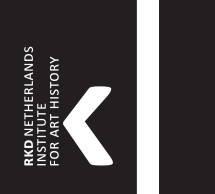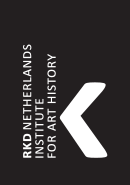3.5 Echoes of Rembrandt
As well-informed as we are about the life of Westerveld, as little we know about Helmich van Tweenhuysen (c. 1604-1674) [1], a Dutch painter who settled in Danzig in 1646 and who is to have done portraits in the manner of Rembrandt [2-4].1
Drost refers to Ambrosius Sprengel (†1694), who in 1649 painted a Stoning of Saint Stephen rendered ‘in Lastmanesque and Rembrandtesque forms’ for the cathedral of Oliva [5],2 and Frimmel reported on a picture of ‘Lissowskische Kosaken’3 by Jan de Pooten [6].4
Schultz and Stech and, if you wish, Abraham van Westerveld are representatives of a Rembrandtesque art movement in Danzig. As always Rembrandt’s graphic art got there first. As early as 1647 the Danzig Burgomaster Adriaen von der Linde (1610-1682) donated a painted copy of Rembrandt’s Ecce Homo to the church of the city of Hela (Hel) [7].5 This same church also contains an undated copy of Rembrandt’s Descent from the Cross (B. 81).6 The church of the Trinity in Danzig contains another such copy after Rembrandt’s Good Samaritan [8].7 In general, decorative painters helped themselves to Netherlandish engravings as models for the decoration of church galleries, ceiling paintings and the like. One can find many examples assembled in the oft-cited book by Drost.8 Works by Rembrandt are sporadically encountered in Danzig collections of the 18th century, such as the Descent from the Cross in the Holmstadt auction of 17629 and a painting of a ‘bloodied coat’ at the second, 1763 Pott auction.10

1
Jeremias Falck
Portrait of Helmich van Tweenhuysen (c. 1604-1673), c. 1646-1655
London (England), British Museum, inv./cat.nr. 1933,1209.21

2
Helmich van Tweenhuysen (II)
Portrait of a man in a fur overcaot wearing a gold chain and a fur hat
Private collection

3
Helmich van Tweenhuysen (II)
Portrait of a dignitary of the Eastern Orthodox Church, c.1650
Wrocław, Muzeum Narodowe we Wroclawiu, inv./cat.nr. VIII-489

4
Helmich van Tweenhuysen (II)
Portrait of a bearded cleric, c.1650
London (England), art dealer Sphinx Fine Art

5
Ambrosius Sprengel
The stoning of Saint Stephen, 1649
Oliwa, Archikatedra Oliwska

6
Hendrick de Pooter (II)
Townspeople on the edge of a harbor, first half of the 1670s

7
attributed to Johann Aken after Rembrandt
Pilate showing Christ to the people, 'Ostentatio Christi', 'Ecce Homo' (John 19:4-6), dated 1647
Gdańsk, Muzeum Narodowe w Gdańsku

8
possibly Jakob Liscornet (I) after Rembrandt
The good Samaritan pays the innkeeper to care for the traveller (Luke 10:25-37); a view of the city of Danzig in the background, 1645
Gdańsk, Kościół św. Trojcy w Gdańsku
Notes
1 [Van Leeuwen 2013] Some information and works have surfaced recently. See Hilligers 2013. Helmich van Tweenhuysen II was probably already in Danzig in 1635, where he married Helena Cornelii Willems (Seekles 2010). Helmich had a brother, named Arent, who was also a painter in Danzig. They were members of a Lutheran merchant family. Their father, Helmich van Tweenhuysen I (died before 1626), was mayor of Zwolle and a brother of the Amsterdam merchant Lambert van Tweenhuysen (1564-1625). Even before 1600 Lambert travelled to Danzig and Cracow to sell jewelry to the Polish king. Another brother, named Lambert Helmichsz. van Tweenhuysen, lived in Danzig, where he married a Cornelia van Breen in 1623 (Wijnroks 2003, pp. 227 and 278, n. 1). On the trading connections of the Van Tweenhuysen’s, see Wijnroks 2003, pp. 276-279.
2 [Van Leeuwen 2013] Email J. Tylicki to S. Erkens, 28 March 2013.
3 [Van Leeuwen 2013] Frimmel received this information from Alexander Czołowski, director of the archives in Lemberg (Lviv), who referred to ‘Lisowski kozaks’ or ‘Lisowczycy’, named after the Polish-Lithuanian commander Aleksander Józef Lisowski (c. 1580-1616).
4 [Gerson 1942/1983] Drost 1938, p. 140; Von Frimmel 1908, p. 98.[Van Leeuwen 2013] Jo or Jan de Pooten can probably be identified as the Flemish painter Hendrick De Pooter II, by whom we have some genre paintings in the style of David Teniers. The H in the signature can be read as J, JO or JH in ligature, for instance on the Dancing Peasants in the Omsk Regional M.A. Vrubel Museum, which was studied and photographed by Bernard Vermet (RKDimages 236156, second image). The painting in Lemberg (Lviv) that Frimmel described in 1908, being a harbor scene with figures, must be a work similar to the one illustrated here. Marijke de Kinkelder (RKD) attributed the painting to Jan De Pooten in 1984. It is here given to Hendrick De Pooter II. Two paintings of Jan de Pooten / Hendrick De Pooter II in the Lviv National Art Gallery were taken by the German's administration from the museum during the Second World War in 1943. Their whereabouts today is unknown (communication Svitlana Stets, Lviv National Art Gallery).
5 [Van Leeuwen 2013] Today in the Muzeum Narodowe w Gdańsku as attributed to Helmich van Tweenhuysen II.
6 [Van Leeuwen 2013] The work has been missing since 1945. No images are known (email J. Tylicki to S. Erkens, 3 April 2013).
7 [Gerson 1942/1983] Drost 1938, p. 140.
8 [Gerson 1942/1983] Drost 1938, p. 140.
9 [Van Leeuwen 2013] Von Holst 1934, p. 62, where the work is mentioned as a drawing and the collector as a certain V[on] Holmstädt. Von Holst based himself on a copy of the original sale catalogue, which he consulted either in the Municipal Archives or the Municipal Library of Danzig.
10 [Gerson 1942/1983] Von Holst 1934, p. 62. [Van Leeuwen 2013] Gerson calls it ‘ein Gemälde des “Blutigen Rockes”’: this must be the scene of Joseph's Blood-Stained Coat is Brought and Shown to Jacob (Genesis 37: 32-35). Sander Erkens identified this work as a painting last seen in 1906 and now attributed to Jan Victors (see Sumowski 1983-1994, vol. 4, p. 2600, under no. 1739). For more information on the Pott collection, see Sander Erkens’ article below. Rembrandt's Polish Rider is not mentioned by Gerson, see Rieke van Leeuwen's article on Gerson's chapter on Poland above.

